Themed collection Sustainable Nanotechnology Organization

Modulating protein amyloid aggregation with nanomaterials
Understanding nanoparticle-mediated protein amyloid aggregation is essential for sustainable nanotechnology and safe nanomedicines.

Environ. Sci.: Nano, 2017,4, 1772-1783
https://doi.org/10.1039/C7EN00436B
Machine learning provides predictive analysis into silver nanoparticle protein corona formation from physicochemical properties
Proteins encountered in biological and environmental systems bind to engineered nanomaterials (ENMs) to form a protein corona (PC) that alters the surface chemistry, reactivity, and fate of the ENMs.
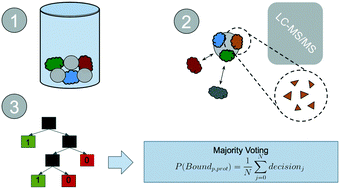
Environ. Sci.: Nano, 2018,5, 64-71
https://doi.org/10.1039/C7EN00466D
Water-based synthesis of gold and silver nanoparticles with cuboidal and spherical shapes using luteolin tetraphosphate at room temperature
The demand for eco-friendly synthetic methods of metal nanoparticles is on the rise.
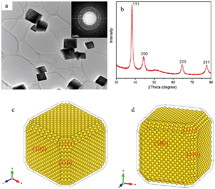
Environ. Sci.: Nano, 2018,5, 917-932
https://doi.org/10.1039/C8EN00042E
The critical role of light in moderating microbial stress due to mixtures of engineered nanomaterials
Light influences chemical interactions of engineered nanomaterials and their toxic effects. Under simulated solar irradiation, we observed that binary mixtures of n-Ag, n-Au, or n-Pt with n-TiO2 cause synergistic toxic effects in E. coli due to photochemical interactions governed by metal nanoparticle stability and localized surface plasmon resonance.
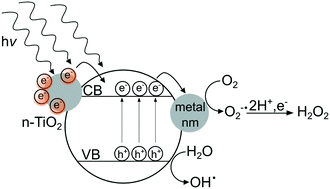
Environ. Sci.: Nano, 2018,5, 96-102
https://doi.org/10.1039/C7EN00527J
Harnessing the power of microwaves for inactivating Pseudomonas aeruginosa with nanohybrids
First report of a nano-enabled breakthrough that harnesses microwave energy for microbial inactivation.
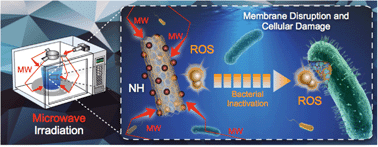
Environ. Sci.: Nano, 2018,5, 72-82
https://doi.org/10.1039/C7EN00702G
Impacts of copper oxide nanoparticles on bell pepper (Capsicum annum L.) plants: a full life cycle study
CuO nanoparticles or compounds affect physiological parameters in bell pepper plants.
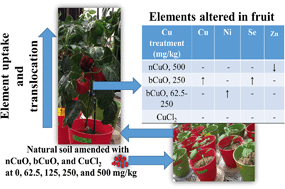
Environ. Sci.: Nano, 2018,5, 83-95
https://doi.org/10.1039/C7EN00697G
Understanding the microbiological, organic and inorganic contaminant removal capacity of ceramic water filters doped with different silver nanoparticles
Pathogen removal efficacy of ceramic water filters (CWF) impregnated with silver nanoparticles (nAg) has been well studied, however scarce information is available about the impact of nAg surface functionalization and removal of inorganic and organic pollutants.
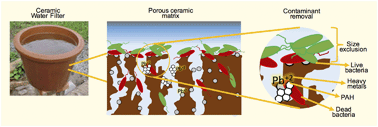
Environ. Sci.: Nano, 2017,4, 2348-2355
https://doi.org/10.1039/C7EN00443E
Time-dependent bacterial transcriptional response to CuO nanoparticles differs from that of Cu2+ and provides insights into CuO nanoparticle toxicity mechanisms
Hyperspectral imaging and gene expression demonstrate nanoparticle-specific induction of a membrane damage response.
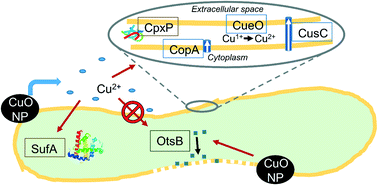
Environ. Sci.: Nano, 2017,4, 2321-2335
https://doi.org/10.1039/C7EN00600D
Nutritional quality of bean seeds harvested from plants grown in different soils amended with coated and uncoated zinc oxide nanomaterials
The effects of coated and uncoated ZnO NMs on bean seeds are affected by the soil conditions. Organic matter-enriched soil enhanced the nutrient quality of the seeds.
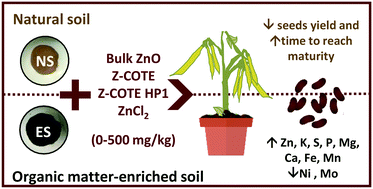
Environ. Sci.: Nano, 2017,4, 2336-2347
https://doi.org/10.1039/C7EN00495H
Mass spectrometry-based metabolomics to assess uptake of silver nanoparticles by Arabidopsis thaliana
Mass spectrometry reveals the biochemical changes in Arabidopsis thaliana resulting from exposure to sub-lethal concentrations of silver nanoparticles.
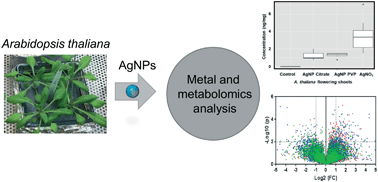
Environ. Sci.: Nano, 2017,4, 1944-1953
https://doi.org/10.1039/C7EN00555E
Ultraviolet photo-oxidation of polyvinylpyrrolidone (PVP) coatings on gold nanoparticles
This study identifies photo-transformations of polyvinylpyrrolidone coatings on gold nanoparticles and evaluates implications for the long-term environmental fate of nanomaterials.
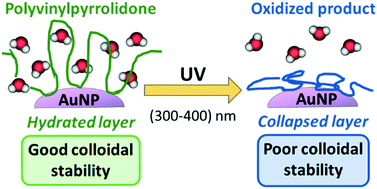
Environ. Sci.: Nano, 2017,4, 1866-1875
https://doi.org/10.1039/C7EN00411G
Biodegradation of graphene oxide-polymer nanocomposite films in wastewater
The polymer present in the nanocomposite is degraded by microorganisms present in the wastewater.
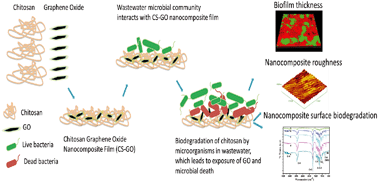
Environ. Sci.: Nano, 2017,4, 1808-1816
https://doi.org/10.1039/C7EN00396J
Characterizing the phosphatase mimetic activity of cerium oxide nanoparticles and distinguishing its active site from that for catalase mimetic activity using anionic inhibitors
Cerium oxide nanoparticles (CeNPs) are potent reactive oxygen and nitrogen species scavengers and demonstrate beneficial antioxidant properties in both cell culture and animal studies.
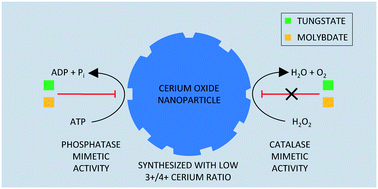
Environ. Sci.: Nano, 2017,4, 1742-1749
https://doi.org/10.1039/C7EN00394C
Using multi criteria decision analysis to evaluate nanotechnology: nAg enabled textiles as a case study
Nanosilver enabled textiles represent an advancement in clothing technology, due to their antimicrobial nature.
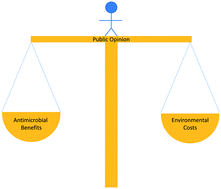
Environ. Sci.: Nano, 2017,4, 1647-1655
https://doi.org/10.1039/C7EN00429J
Graphene oxides in water: assessing stability as a function of material and natural organic matter properties
Interactions with natural organic matter (NOM) are critical to consider when evaluating the stability of nanoscale materials, including graphene oxide (GO), in aquatic environments.
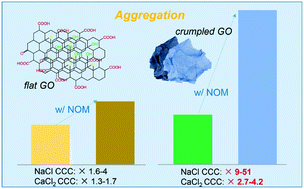
Environ. Sci.: Nano, 2017,4, 1484-1493
https://doi.org/10.1039/C7EN00220C
About this collection
This collection contains selected papers from the Sustainable Nanotechnology Organization (SNO) conference, which was held in Orlando, Florida, in November 2016. Guest Edited by SNO co-founders Wunmi Sadik and Barbara Karn, the collection showcases some of the latest research on the applications, effects, implications, and lifecycle aspects of nanomaterials within various systems relating to sustainability.